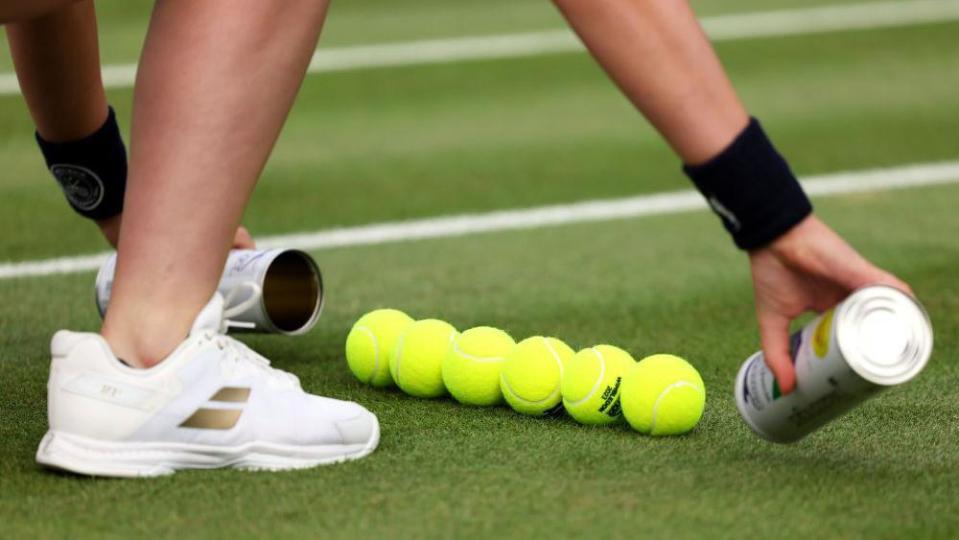Could a more sustainable ball be used in tennis?

'New balls, please' will be said countless times when Wimbledon begins on Monday - but could we soon see a new, more sustainable ball used in tennis?
Tennis' world governing body is exploring a concept that could radically change the design of tennis balls and the materials used to make them.
The International Tennis Federation (ITF) has developed a prototype of a ball without a fabric cover which it hopes will provide an environmentally friendly option to the rubber and felt in current balls.
The ITF estimates hundreds of millions of balls are used in tennis games every year, and challenges exist with recycling conventional balls because of the way they are made.
So it is exploring potential options for a new design of ball, ways to prolong the lifespan of balls and rules around ball changes, all in an effort to tackle the issue of sustainability.

ITF 'trying to be proactive'
A working group has been set up, involving the ITF, manufacturers and other federations, specifically to look at sustainability in tennis. The ITF said tennis balls have emerged as the main focus when it comes to equipment.
The ITF’s lab in Roehampton, south-west London, a few miles from The All England Lawn Tennis Club, is home to a number of robots that test balls and racquets, as well as a wind tunnel powered by an ancient computer, which is used to test the aerodynamics of balls.
The prototype shown to BBC Sport - which will be presented to ball manufacturers and other stakeholders in the coming weeks - features a polymer outer shell with holes, as opposed to the normal fabric coating over the rubber core.
Those involved in its design say that it is still very early stages and there could yet be a better solution, but said it shows how the ITF is trying to "stimulate innovation in the industry" and be "proactive".
"We've been looking at this for the past few months,” said Jamie Capel-Davies, head of ITF Science and Technical Department, who has outlined three key areas to determine whether this design is viable.
"The first, most important, from a sustainability [point of view], is: is it actually a net benefit in terms of the associated CO2 emissions of production and the life of the ball?"
The team will look to test the life cycle of the new design versus the conventional ball.
"The second thing is, does the ball perform like a conventional tennis ball?
"And then the third thing is, are there any practical considerations? What's the feasibility, the cost, the economics and so forth of this type of design?"
Capel-Davies says there is still some way to go before deciding whether this prototype is the solution - but they will continue to weigh-up the options.
Could the rules be adapted?
Work is also underway to explore the potential to adapt the rules around how regularly balls are changed during matches, and looking at ways to prolong the lifespan of existing balls.
"We're looking at the possibility of maybe using fewer tennis balls, so changing the order size that some tournaments are making in terms of tennis balls and looking at the frequency of ball changes within matches so that fewer balls are needed," he says. "The second thing is trying to prolong the life of tennis balls. So, for example, repressurizing balls to extend their life."
At the moment, ball changes will occur at Wimbledon every seven or nine games, depending on the set. But in some ITF events that can extend to 11 or 13 games.
The working group is still to consult the players on these ideas, but Capel-Davies is hopeful the professionals and the sport recognise the impact they could have.
"Sport, I think, has a really big role to play in terms of sustainability. It can use its profile to try and encourage sustainability to set an example for others in this area. So we want to try and use that influence as positively as we can."

 Yahoo Sports
Yahoo Sports 
